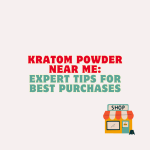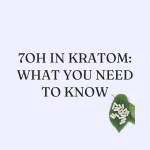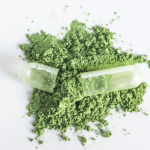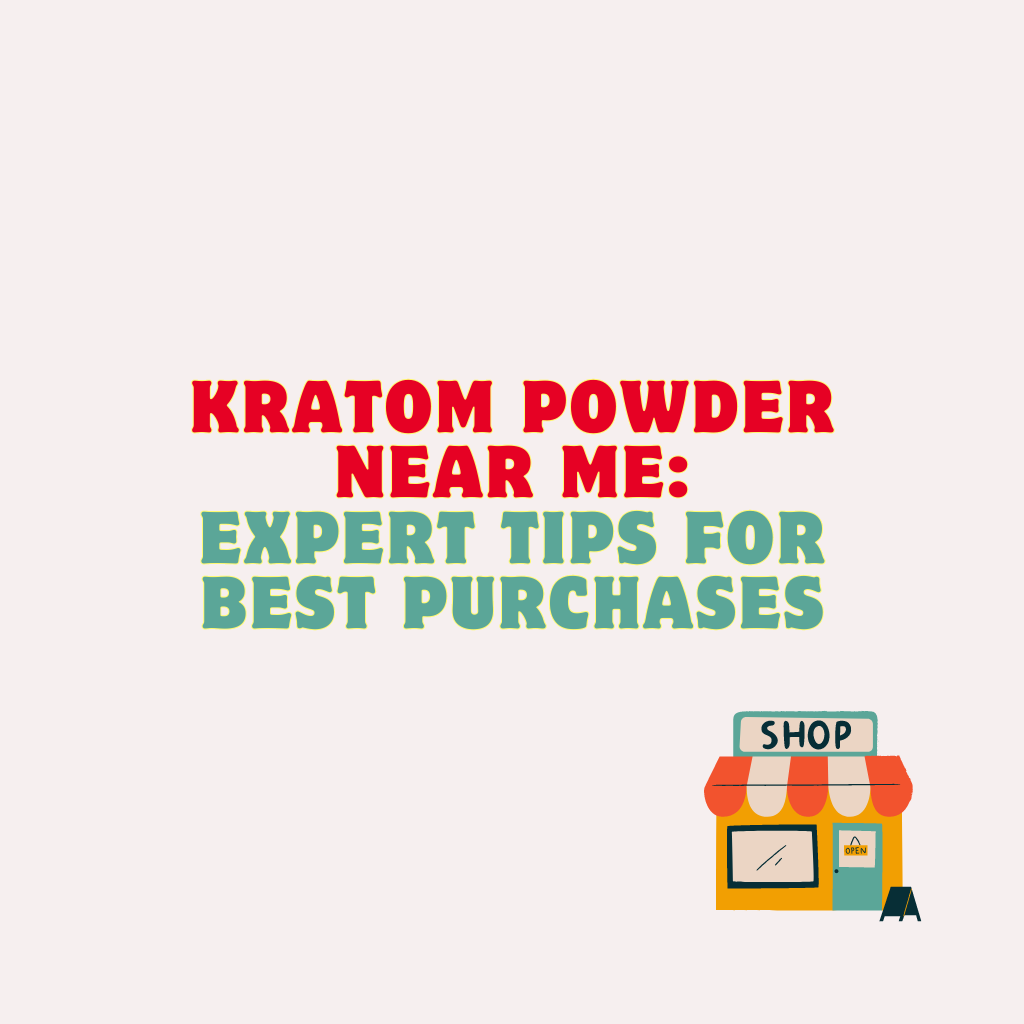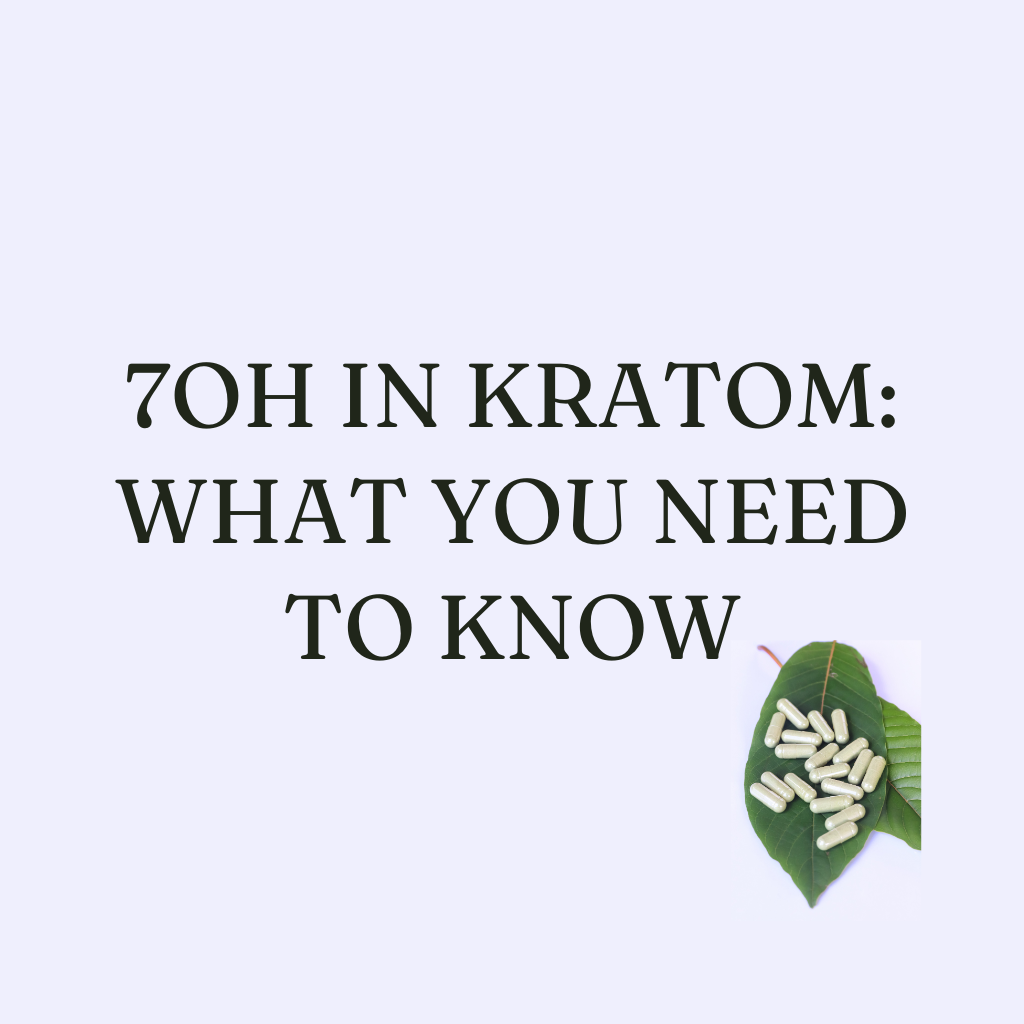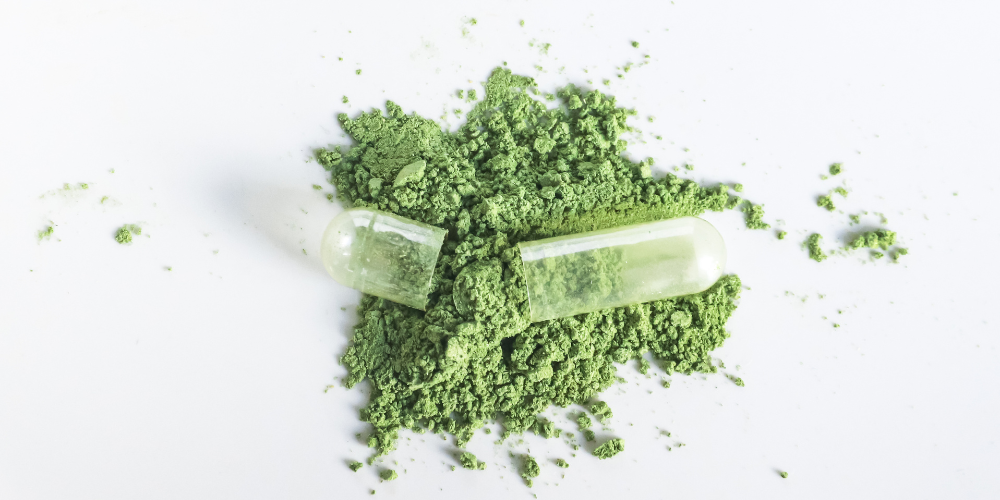
Free Shipping on Orders Over $75!
JOIN OUR EMAIL LIST FOR 20% OFF, weekly coupons up to 30% OFF
Kratom With Coffee: Can You Mix Kratom and Coffee Together?

You’ll be surprised to find out kratom is derived from the same family as coffee, which begs the questions, does kratom contain caffeine and if it doesn’t, can you mix them?
Kratom does not contain caffeine. Alkaloids are responsible for the stimulating properties of kratom. However, it is very possible to mix the two. Kratom trees and coffee plants are from the same botanical family, Rubiaceae. Kratom is a popular alternative to caffeinated drinks.
Ready to learn more about the energizing effects of kratom? I’ve got lots to share with you on the benefits of kratom, and tips on how you can combine it with caffeine for an even better experience!
Is Kratom Caffeinated?

Caffeine is the world’s most widely used psychoactive drug. The stimulant is part of the methylxanthine class of compounds and is found in soft drinks, coffee, tea, yerba mate, guarana, and more.
But you won’t find a single caffeine compound in kratom. Alkaloids are the chemical powerhouses in kratom. At the last count, researchers had identified more than 40 kratom alkaloids.
But scientists have identified two which matter much more than the rest: mitragynine and 7-hydroxymitragynine.
In a chemical sense, kratom alkaloids have more in common with opioids than coffee. These compounds bind with receptors in the opioid system, an interaction that offers several therapeutic benefits.
Kratom alkaloids are weaker than opioids and are less prone to causing addiction.
In small amounts, kratom alkaloids will give you increased energy, focus, and mental clarity. Meanwhile, larger quantities produce sedative effects and can help with stress and physical discomfort.
Unsurprisingly, if you’re considering kratom as a caffeine replacement, you’ll need to take it in small doses.
Taking Kratom with Coffee

Caffeine is an effective kratom potentiator, meaning kratom and coffee go well together.
Caffeine enhances the benefits of kratom alkaloids, providing an unmatched state of mental alertness and focus you wouldn’t get from kratom or coffee alone.
You have to be a little careful combining kratom with coffee. Both are very stimulating and can trigger side effects if you take too much. Mental stress, jitteriness, and irritability may occur if you overdo it.
When starting out with a kratom-coffee mix, I recommend keeping the kratom dosage low and the coffee roast light. Get an idea of how your body responds to pairing kratom with coffee before moving up to higher dosages.
How to take kratom with coffee
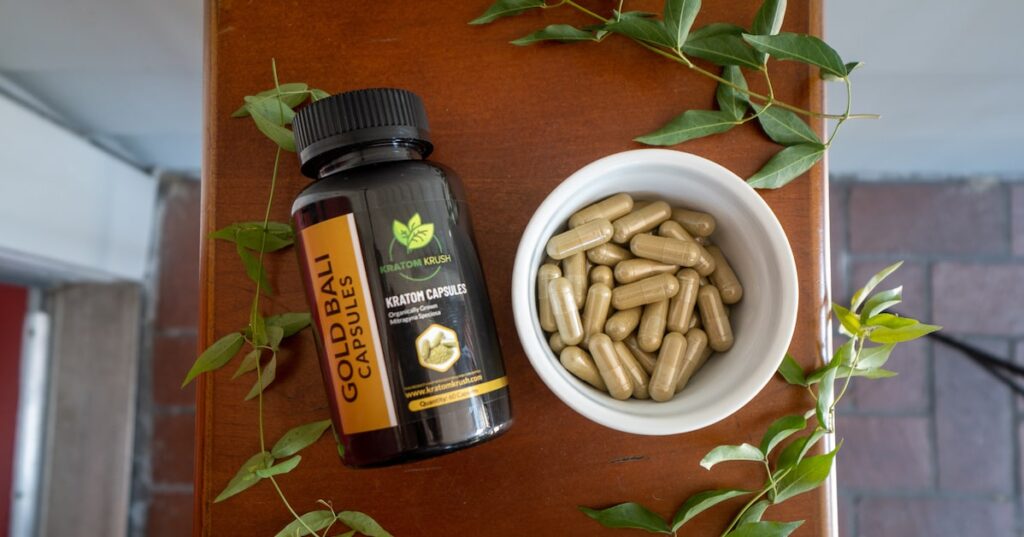
The easiest way to take kratom with coffee is by using capsules. Swallow a couple of capsules with water, and then enjoy some coffee about 30 minutes later.
If you’d like to learn more about kratom capsules, feel free to checkout this post I wrote by clicking the link here.
Kratom in capsules has a delayed effect, as the stomach must first digest the capsule before absorbing the alkaloids. By holding back on the coffee for half an hour, you will ensure the caffeine and alkaloids kick in at the same time.
You could ‘toss and wash’ some kratom, and then drink a coffee immediately afterward. The toss and wash method is a speedy way of getting kratom’s perks.
Simply scoop powder into your mouth, swish vigorously with water, and then swallow. The effects should start within a few minutes, begin to slowly sip on a fresh cup of coffee to get the benefits at the same time.
Stirring kratom powder into your coffee is another option, although such a brew could have a nasty taste. If you do try this, consider adding sugar, honey, stevia, or another sweetener.
For stronger and more efficient kratom effects, try extract products, such as kratom tinctures, which you can fin here.
Best Kratom Strains to Use with Coffee
Taking kratom with coffee can yield great benefits, but finding the perfect combo may take a little experimentation. Much depends on how you like your coffee.
Intense dark roasts go well with relaxing red vein kratom. In contrast, a decaf brew pairs best with an energizing white vein strain.
If you enjoy light or medium roast coffee, a well-balanced green vein kratom should complement the caffeine beautifully.
I’ve picked out four great kratom strains that go perfectly with coffee.
Red Bali
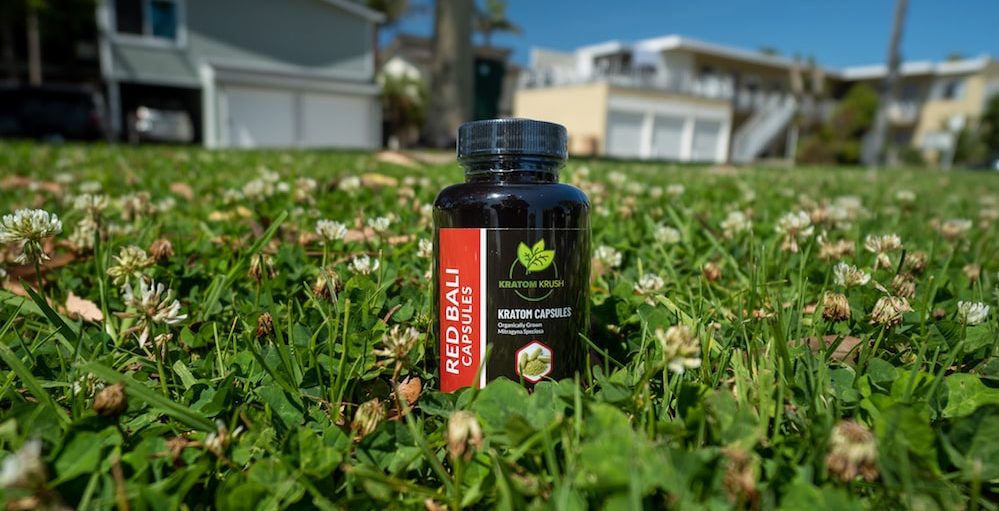
Renowned for its soothing effects, Red Bali isn’t an obvious kratom candidate to mix with coffee. But this calming, opiate-like Indonesian strain goes well with dark roast coffee when consumed in small to moderate dosages.
Even though red vein kratom is mostly sedative, lower quantities do have some stimulating effects. Combined with the high caffeine levels of a strong, dark roast coffee, Red Bali can take your focus and clarity to a new level.
Better still, the naturally calming and peaceful properties of Red Bali are still very much present. These underlying effects help stave off any mental stress and jitters you might normally experience from drinking dark roast coffee.
With Red Bali kratom, you can enjoy strong coffee with the confidence that those classic coffee side effects will be kept to a minimum. Just remember not to increase the dosage too much, otherwise, Red Bali’s traditional effects will crush any caffeinated stimulation from the coffee.
Green Malay
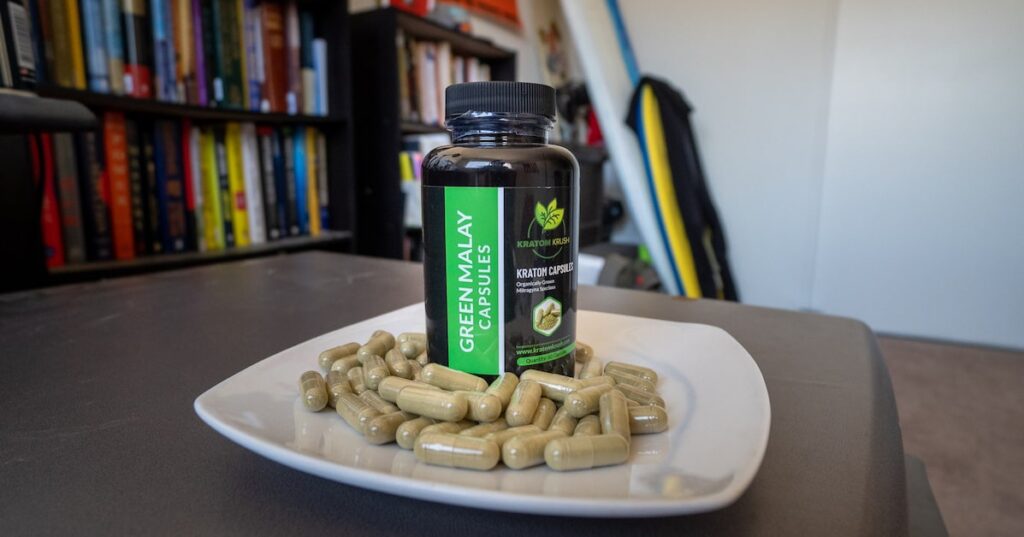
Malaysia’s best-known kratom strain goes wonderfully with any coffee, but especially with medium and dark roast brews.
Green vein kratom is essentially a hybrid of red and white vein kratom, giving you the best of both without ever becoming overwhelming in either direction.
Malay kratom is also much-loved for its balanced properties, making Green Malay a go-to strain for all situations.
Green Malay stimulates but induces enough relaxation to ease stress and enhance mood. Mix these effects with a medium or dark roast coffee, and you’ll be set for several hours of energizing benefits, without any caffeine side effects.
Maybe you work long days in the office and suffer from back discomfort. A Green Malay and coffee combo will help keep you focused, at peace, and physically relaxed.
The ideal kratom dosage depends on how you like your coffee. For a dark roast, I suggest a moderate 4 to 5 grams of kratom.
For a medium roast, 2 to 3 grams will ensure that Green Malay’s calming effects don’t stamp out the stimulating caffeine.
White Bali
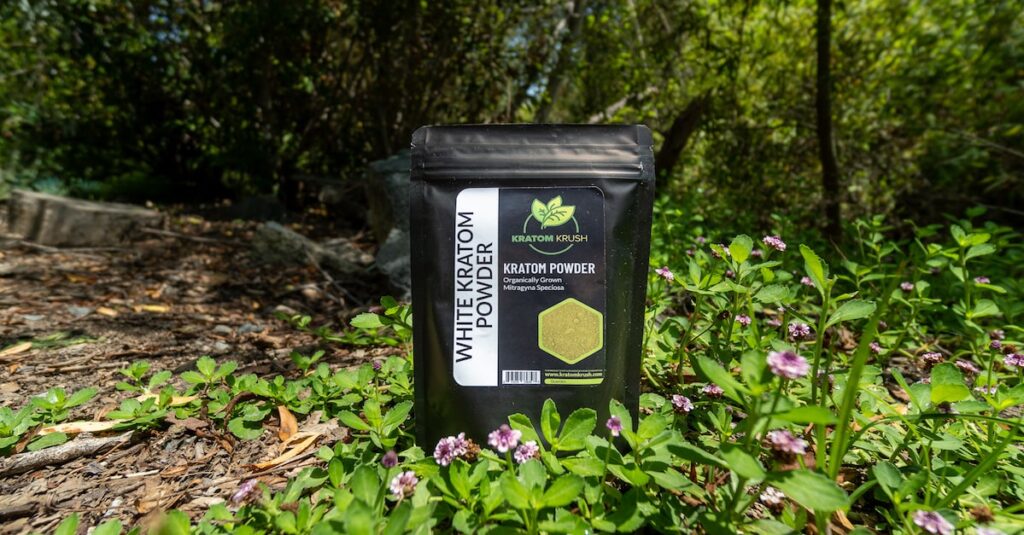
While white vein kratom is typically more energizing than sedative, the opiate-style properties of White Bali jive well with medium and dark roast coffee.
I take White Bali with my coffee when I want a really stimulating experience. The kratom and coffee combine to promote astounding concentration and alertness, yet this strain still produces some soothing effects to stamp out any jitters.
With White Bali, you can be flexible with the dosage. A low quantity should make your experience more invigorating, whereas higher dosages tend toward more relaxing effects.
For strong coffee fans, White Bali is a brilliant strain to mix coffee with at work. You’ll feel sharp and full of energy, but never to the point of distraction.
White Thai
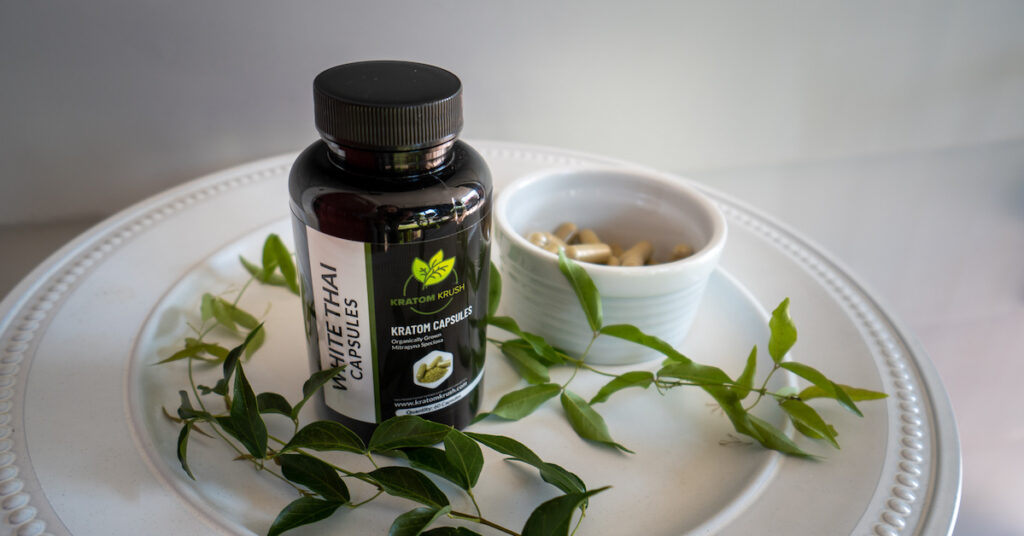
You won’t find a more stimulating kratom than White Thai, a long-term favorite among manual laborers in Thailand. A remarkably energizing strain, I like to enjoy White Thai with decaf coffee.
Sure, this isn’t technically pairing kratom with caffeine, but hear me out.
Decaf coffee is a great choice for coffee lovers who revel in the taste but can’t cope with the side effects. With White Thai kratom, decaf drinkers can still get the coffee experience, but without the downsides.
Stimulating White Thai delivers all the energizing benefits, but doesn’t produce agitation, or irritability. Some find kratom even relieves stress and emotional discomfort.
That said, White Thai’s powerful effects aren’t to be underestimated. High dosages could still cause headaches in some users.
First-timers should take just 2 to 3 grams of this strain with their coffee. When it comes to kratom stimulation, less is often more.
Kratom vs. Coffee
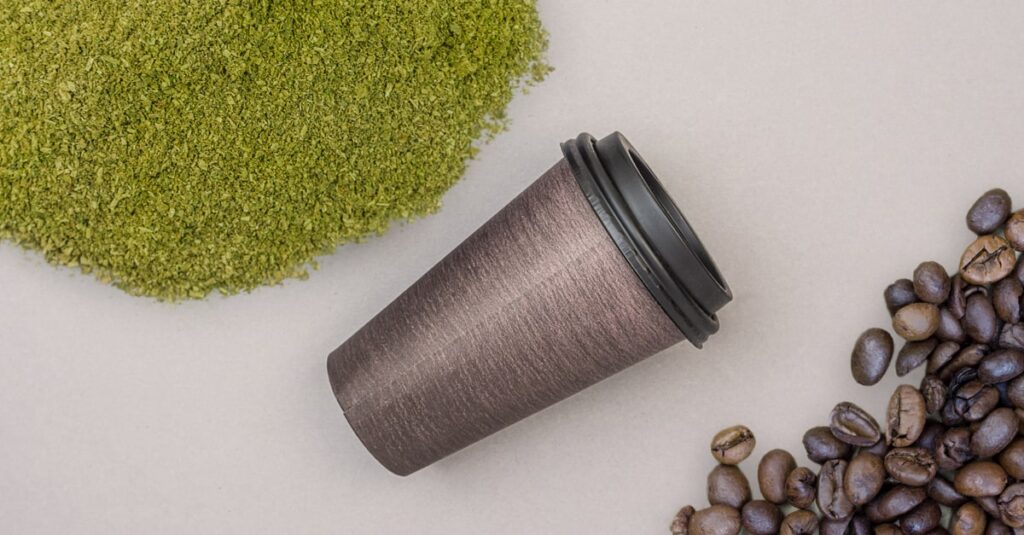
The choice between kratom and coffee comes down to personal preference. Coffee certainly tastes better than kratom, which has a strong, bitter flavor.
But coffee causes side effects that may be avoidable with a kratom strain that balances relaxation and invigoration.
Kratom comes with a longer and more serious list of side effects than coffee. Nausea and vomiting, dry mouth, and heartburn may be manageable, but there are rare instances of kratom causing seizures and death.
You certainly have to tread more carefully with kratom.
Both kratom and coffee, or more specifically, kratom alkaloids and caffeine, are addictive, and have unpleasant sets of withdrawal symptoms. Coming off kratom may cause joint discomfort, muscle aches, aggression, and more.
Caffeine withdrawal symptoms include splitting headaches, fatigue, depression, stiffness, and flu-like symptoms. Many people underestimate just how hard caffeine is to quit.
Kratom and coffee are excellent energizers, but each one has its drawbacks. I prefer kratom because the stimulating effects are complemented with calming vibes – shout out to Green Malay – which gives me fewer worries.
In contrast, caffeinated coffee is all about energy with no balancing effects. But your circumstances may be different.
Is Kratom From the Same Origin as Coffee?

Kratom and coffee both originate from the same plant family, officially known as the Rubiaceae. You may know it better as the Madder family or the Bedstraw family.
The Rubiaceae family consists of more than 13,500 plant species. Coffee (Coffea) and kratom (Mitragyna speciosa) are among the most famous.
You might also have heard of Cinchona plants, which contain quinine – a medicinal compound used to treat malaria since the 1600s.
However, despite having the same plant origin, kratom and coffee are quite different. You won’t find any mitragynine in coffee or any caffeine in kratom.
Furthermore, coffee plants are grown in several continents, mostly the Americas, the Middle East, and Africa. In contrast, kratom trees grow almost exclusively in Southeast Asia.
Indeed, more than 90% of the world’s kratom supply comes from Indonesia. Both coffee and kratom need a hot and humid climate to grow successfully.
Traders around the world have bought and sold coffee for hundreds of years, explaining its well-established global presence.
Kratom has been used in Southeast Asia for well-being purposes, general wellbeing and in religious festivals for centuries. But kratom has only gone truly global in recent decades.
Can You Mix Kratom With Energy Drinks?
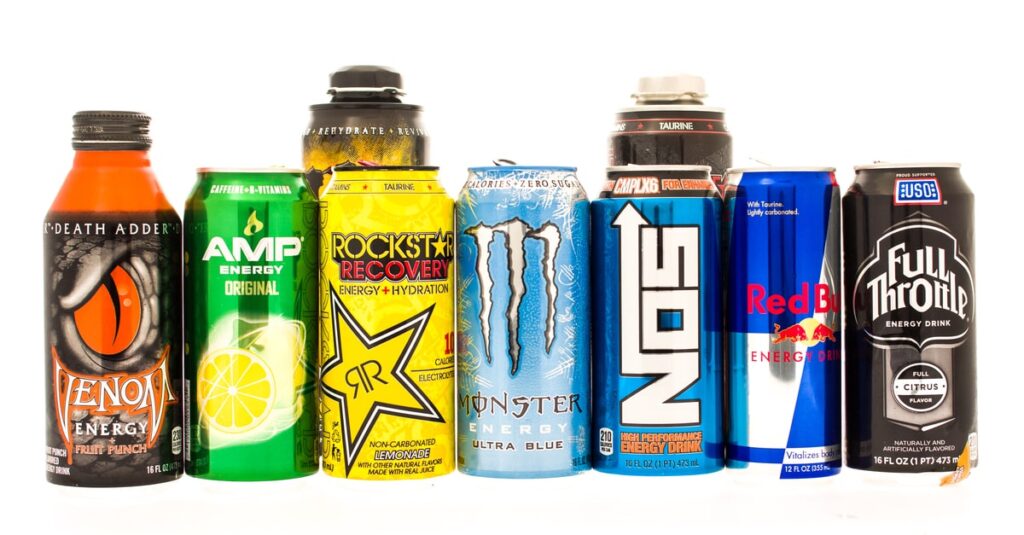
You can mix kratom with energy drinks, and you could do so for a couple of reasons. Perhaps you need potent stimulation, or maybe you want the relaxing effects of kratom to take the edge off your energy drink.
The first thing to know is that combining kratom with energy drinks is safe. Sure, you still have to use both products responsibly, but there are no additional risks from blending the two.
Being responsible means starting with a low dosage, especially if pairing an energy drink with a bracing white vein kratom.
Amp up your energy drink with kratom by using a white kratom strain like Thai or Sumatra. The burst of kratom should intensify your experience and help your energy boost last longer.
Whichever white kratom you choose, keep the dosage to 2 to 3 grams. Not only is this safer, but the kratom may start having a sedative effect if you take more.
If energy drinks make you jittery, kratom’s calming effects might be just what you need. Both green and red strains work well in this scenario.
A moderate green kratom dosage (4 to 5 grams) should ease any mental stress without suppressing any energizing effects. However, with red kratom, lower dosages (2 to 3 grams) are essential.
Higher amounts are too sedative, and any stimulating benefits you’re getting from the energy drink will be lost.
Ready to try kratom with coffee or an energy drink? Check out our shop page today.
Every kratom strain featured in this post is available, along with many more powders, capsules, tablets, and extracts!
Did like a post? Share it with:
nimesh
Search
Table of Index
Post Categories
Related Posts
Where to buy kratom near me is a question that many users find themselves asking when looking for quality products
Finding the best Kratom Powder near me can feel difficult with so many options available locally. But steering through stores
Are you one of those scrolling on the internet for ‘7ALKS near me’? Are you looking for 7ALKS, 7-Hydroxy 15mg
7OH, or 7 hydroxymitragynine, is a significant alkaloid found in kratom that plays a crucial role in its effects. This
Curious about 7OH kratom? You’re not alone. As more people explore different botanical products, 7 hydroxymitragynine (7OH) has emerged as
Have you ever accidentally over-consumed kratom and experienced a hangover? Well, the good news is they’re easily avoidable. A kratom
Disclaimer
Must be 21 years or older to purchase kratom. Products are not for internal use. The US FDA Has Not Approved Kratom as a Dietary Supplement. We do not ship to the following states, cities and counties in the US where Kratom is banned Alabama, Arkansas, Indiana, Rhode Island, Tennessee, Vermont, Wisconsin. Sarasota County, Union County, Denver, San Diego, Louisiana. All sales should be 100% U.S. sales only.
Consult with a medical professional before use if taking prescription medication or affected by a serious medical condition. Always seek medical advice before using this or any other supplemental dietary product. These statements have not been evaluated by the Food and Drug Administration (FDA).
© 2025 Kratom Krush. All Rights Reserved. Operated by XXIV LLC Privacy PolicyTerms & Conditions


